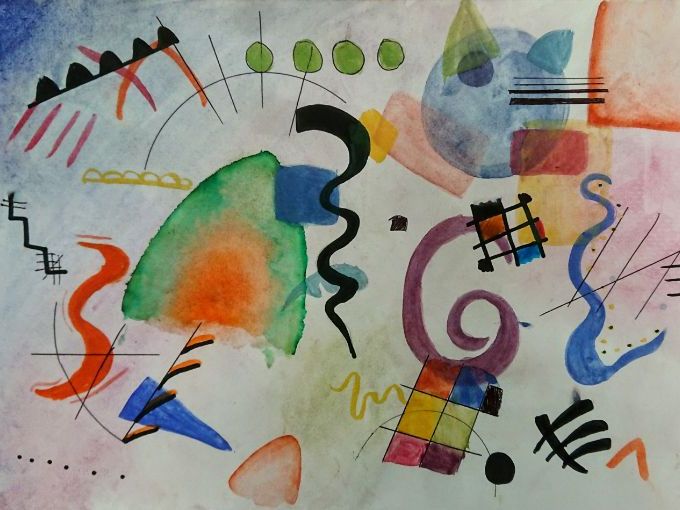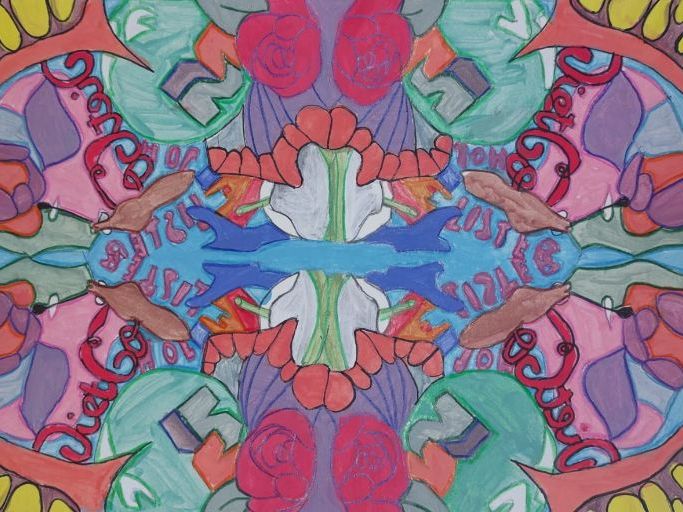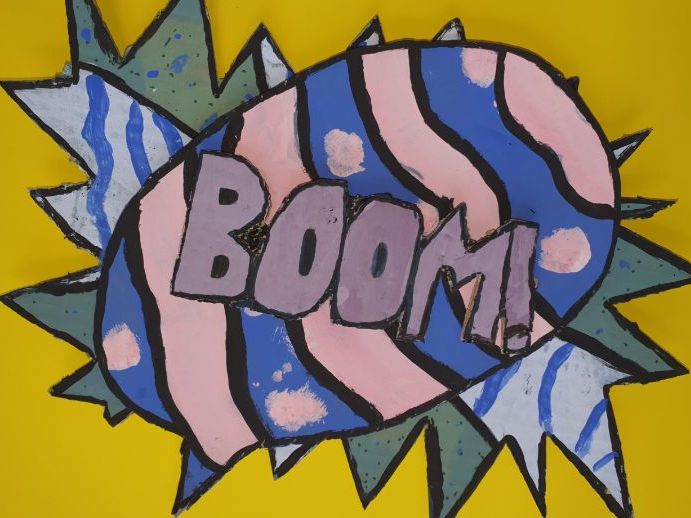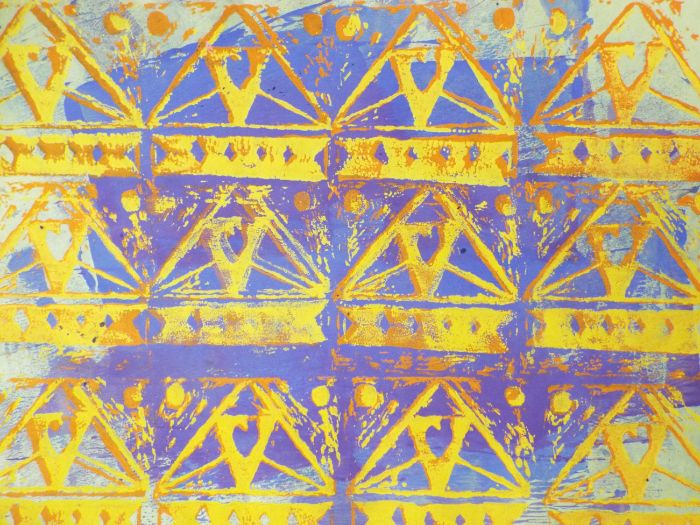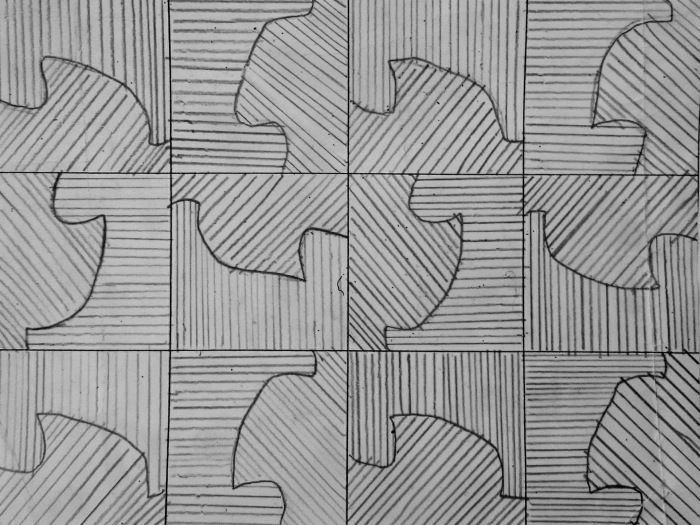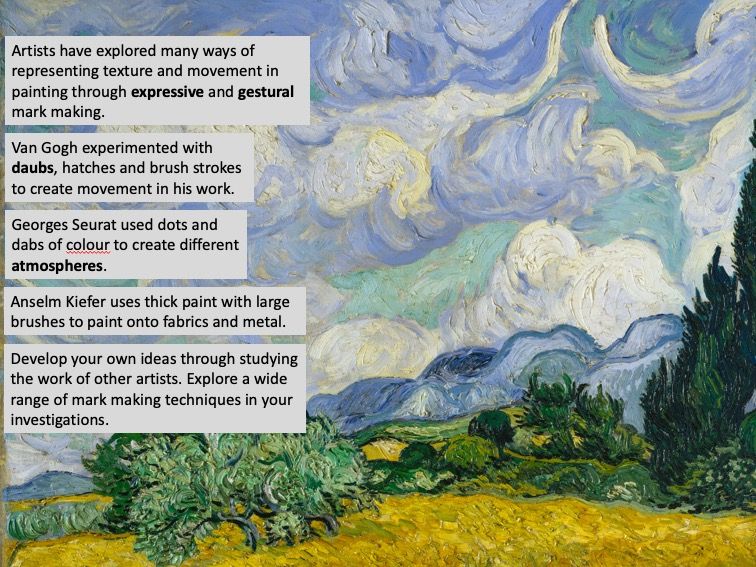
31Uploads
52k+Views
10k+Downloads
Art and design

KS3 Colour theory Kandinsky painting project
This is a colour theory scheme of work based on the artist Kandinsky. Students create a series of paintings whilst listening to different styles of music, experimenting with line, shape, composition and colour. I designed this to engage KS3 boys in painting, so the focus is on the use of colour to convey mood, rather than trying to create very precise, small paintings.
This is a full scheme of work with starters, entry tasks, peer and self assessments throughout. All of the outcomes are differentiated and there are examples of students work at each stage. There are links to artists, artist research pages and links to the music I chose for students to paint to.
I designed it to last a full term, but you can alter it and use it however you wish.

KS3 Art and Textiles Hand Embroidery Project
This simple textiles art project is ideal for teaching younger students as it is really short but engages students by giving them lots of choice in their work. Students love the bright colours, the different shaped stitches and, of course… the sweet, sugary subject!
Students learn basic hand stitches: running, back, chain, French knot and have the option to learn more if they can.
The outcomes are so fun and students loved using the felt tips on the fabric. The presentation includes lesson starter activities, plenaries, reflections etc. and breaks down the steps into really simple to follow instructions. There are links to appropriate artists and links to free handouts to use too.

KS3 Cubism Art Project using Oil Pastels (Plants and Flowers)
This is a full scheme of work teaching oil pastel techniques in a Cubist style. Students look at various Cubism techniques, and apply them to their own artwork - the subject matter is plants and flowers. I have created a full presentation with 30 slides that include starters, plenaries, mini tasks, challenges etc.
The presentation shows the steps of the oil pastel art project clearly from start to finish, with various differentiated outcomes and activities. It is simple to teach and the outcomes from my students (mixed ability Y9) have been really wonderful!
The subject matter is plants and flowers and I have found it engaging for my Y9 students - mainly because oil pastels provide instant gratification!

KS3 Art Pattern Painting Project - William Morris inspired
This full pattern painting scheme of work is inspired by artist William Morris. There are over 70 slides on the presentation, and it goes through many aspects of creating a repeated reflection design using tracing paper.
The project introduces students to the work of William Morris, different types of pattern repeats and colour theory. It builds on basic colour theory and introduces secondary, tertiary, monochromatic, analogous and complementary colour schemes. The presentation includes a slide explaining the project aims and each lesson has clear tasks set.
The projects is designed to build students’ skills in painting each lesson, with all lessons having starter / entry tasks and plenaries included. There are lots of examples of high quality student work at each stage of the project. There are also challenges included and printable resources (slides with white backgrounds so they are easy to print and copy) to use in the lessons.

3D Pop Art & Colour Theory full scheme of work using cardboard and paint
I designed this 3D Pop Art project as a fun way to end the summer term with my students. It is inspired by different Pop Art ideas and I combined a few elements of art (including colour theory) to create this full scheme of work. I taught it with Year 7 (11-12yrs) for around 6 weeks, having one hour lessons per week - though I think it could easily be adapted for different ages too!
The 3D Pop Art project was designed to be a fun way to introduce students to some of the basic elements of Pop Art; bright, flat colours, use of line and outline to create comic styles, pattern and the importance of language and text, specifically onomatopoeias. I wanted students to develop their understanding of colour theory too, so added some challenges for colour mixing and use of colour schemes.
The project includes starter activities, plenaries, reflection tasks etc. and anything that can be printed is included on the slides. There are 34 slides in total.

KS3 Poly-Printing Art Scheme of Work
This art scheme of work is to teach the poly printing technique to students in a fun way. It is inspired by Adinkra symbols and includes all of the information you need to teach poly printing effectively, all of the start activities, entry tasks, plenaries, reviews / student assessments etc. It even includes cleaning up roles!
The full project includes a lot of information for lessons on colour theory and links to an artist (looking at creating textured backgrounds to print onto).
There are 30 slides in total and I have taught this project over 6 - 8 week term, but obviously you could shorten it if you need to. It includes examples of student work and teaches students to understand some basic pattern design.

Drypoint Etching GCSE Art Project
This is a full drypoint etching GCSE art project. It covers the four AQA assessment objectives and is based on the theme ‘Inside Out’. I have taught this project as a mini project but it could easily be extended or developed.
You need some basic equipment: printing ink, perspex (old CD cases work well) I got off cuts from the school DT department. A tool to scratch the perspex (anything with a sharp point works) and a printing press. If you don’t have a printing press, you can easily transfer the image using a wooden spoon or similar.
The project uses Leonardo da Vinci’s anatomy drawings as a starting point and asks students to look at his work then respond. I had students do observational drawings from skulls / bones from the science department.
I had students work on design sheets for this project but you could easily do the same in sketchbooks. Students create a series of observational drawings then use them, along with pictures of celebrities or inspirational people, to create ‘Inside Out’ portraits which show half a face and half a skull.
I have included steps for each stage of the processes, including drawing skulls, and videos (slides 18 and 20 - link is also in the notes) that show students what drypoint etching is and how to do it. The slides show clear instructions for students and I have also incuded examples of student’s work at each stage. Students create colourful, creative prints that they can work independently on once they know the process.
Students were asked to create test prints then a series of final colourful prints - I was really impressed with their outcomes!

Creating patterns inspired by MC Escher full art project
This is an art scheme of work focusing on pattern design. Using MC Escher as a reference and research point, the lessons look first at optical illusions, then at different aspects of pattern design, pattern repeats and colour theory. The lessons are designed for students of all abilities, and draw on any previous work (students select sections of their work, or photographs etc. to work from).
I have used this scheme of work with KS3, however it could easily be differentiated to KS2 or 4.
It includes full lessons, with Starter / Plenary / Homework activities.

GCSE Art Scheme of work - landscape and mark-making project
The aim of this project was for students to explore a range of mark making techniques, then choose the most suitable for their landscape ideas.
The outcomes were painted (and printed) landscapes, focusing on movement, atmosphere and texture. The brief was:
Many artists are inspired by landscapes. Some draw or paint from direct observation, others create pieces from memory. Research relevant artists, looking at how they create movement and different atmospheres in their work. Develop mark-making techniques then produce a final outcome based on a landscape you have happy memories of.
Students started by looking at artists such as Van Gogh and Georges Seurat.
This project includes all of the lessons I used, including starter activities, plenaries, assessments etc. It includes over 40 slides.
It has a range of artist research starting points and teaches a large range of techniques including, pointillism, dry brush, monoprinting, collage, painting with glue, impasto, textures etc.
Bundle

Art Bundle! KS3 Colour Theory / painting schemes of work
These art colour theory projects are two of my most popular resources so I have bundled them to create a discount.
They are both full schemes of work, one based on Abstract Still Life and one based on the artist Kandinsky. I have used paint when teaching both of them, but I’m sure the Abstract Still Life project can be adapted to use coloured pencils / felt-tip pens and brushes etc.

